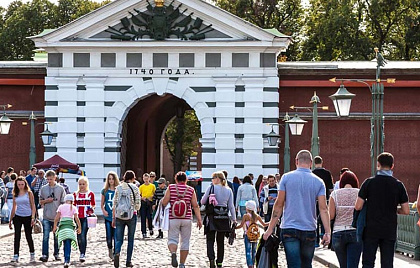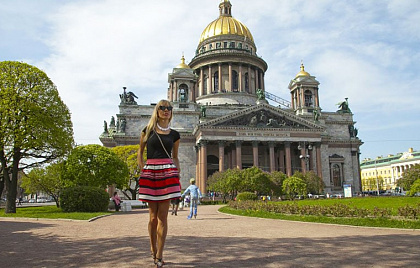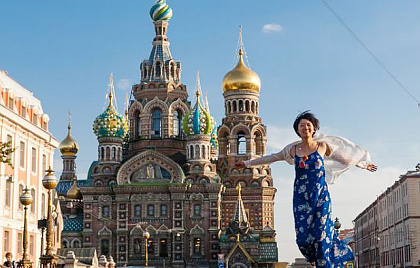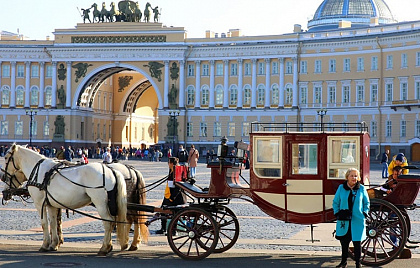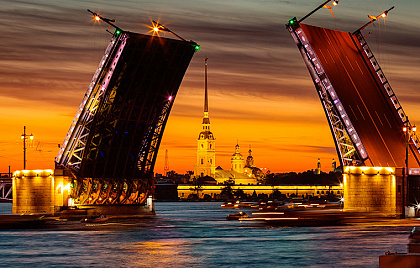Peter and Paul Cathedral
In 1712 Peter I moved the capital of the Russian Empire from Moscow to St.Petersburg. The new capital needed a metropolitan cathedral. The foundation stone for such cathedral was laid in the same year on the territory of the Peter and Paul Fortress. The cathedral was consecrated in the same year 1712 being dedicated to Apostles Peter and Paul.
The Peter and Paul Cathedral was built by the Italian architect Domenico Trezzini in a style which later got named Petrine Baroque. The cathedral with a tall belfry with a spire fully matched Peter I’s taste, who liked architecture of the Northern Europe, but was against the traditional Russian view of what a church or cathedral should look like.
The belfry of SS Peter and Paul Cathedral is 122,5 meters high. The gilded spire is crowned by an angel. Since Peter I’s times, the cathedral has been St.Petersburg’s architectural dominant.
The cathedral still has its authentic wooden iconostasis made by Moscow craftsmen in the first half of the 18th century. According to the Russian tradition, the iconostasis was built without use of a single nail.
Peter I wanted the cathedral to be the burial place for the Romanov family. His will was fulfilled, and practically all Russian emperors and empresses from Peter I to the last Russian emperor Nicholas II were buried there.
The cathedral was a burial place not only for reigning monarchs but all members of the Imperial family as well. The family was large, and after some time there was shortage of space. That is why a Grand Ducal Burial Vault was added to the Cathedral in late 19th century.
The Cathedral was a functioning church till 1919. In 1924 it was opened as a museum. Today, it is still a museum but liturgy is chanted there on Saturdays and Sundays and special occasions.











